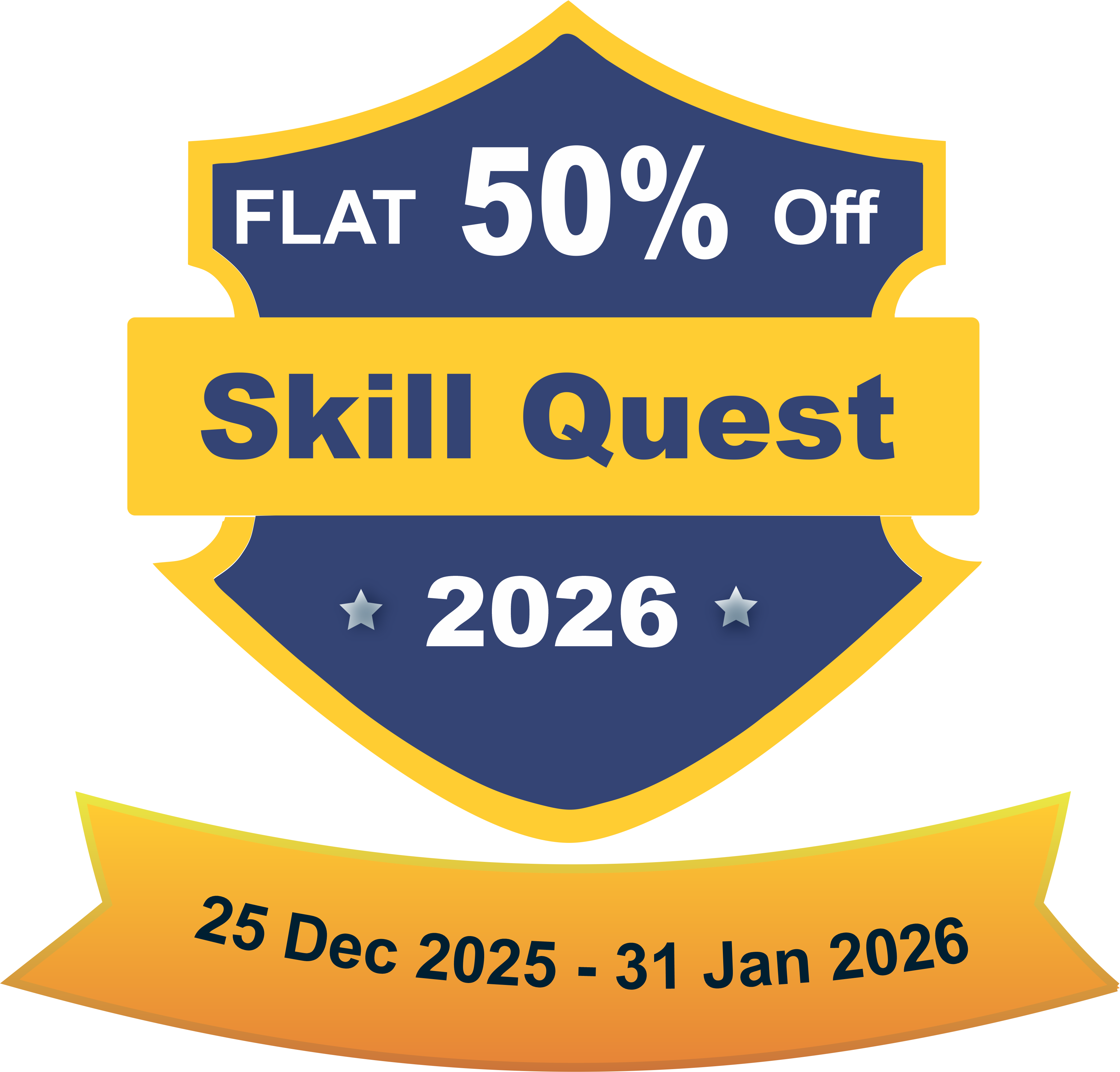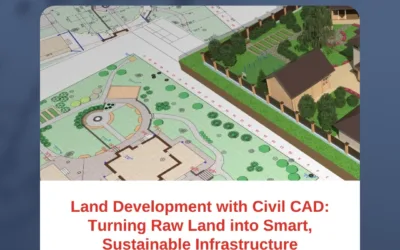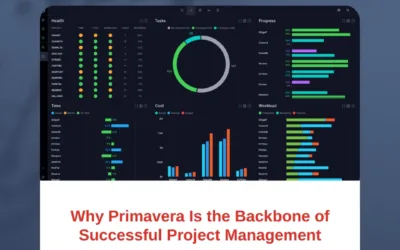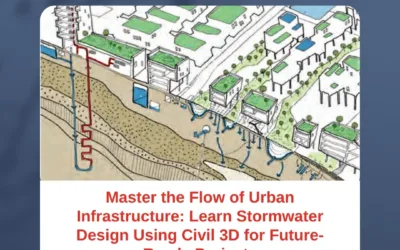Best Civil CADD Training Institute in Bangalore
Edu Cadd Training Institute in Bangalore is the Best for Civil and Mechanical CAD Courses. Our Institute Provides training for Civil, Mechanical, Interior Designing and IT Courses students with 100% Placement Guarantee.
For further details contact us: +91 9591607638
Get you Scholarship and other details
Civil CADD Courses in Bangalore – Overview
Civil CADD (Computer-Aided Design and Drafting) courses in Bangalore are tailored for individuals looking to master software tools essential for civil engineering, architectural drafting, and construction project management. These courses provide hands-on training on leading CADD software and are designed to help participants visualize, design, and manage civil engineering projects with precision and efficiency.
Course Modules:
- AutoCAD for Civil Engineers:
- Focus: 2D and 3D drafting and modeling for civil engineering projects.
- Applications: Designing site layouts, drafting construction plans, and creating detailed technical drawings.
- Revit Architecture:
- Focus: Building Information Modeling (BIM) for architectural and structural design.
- Applications: 3D modeling, simulations, and generating project documentation for residential, commercial, and industrial projects.
- STAAD.Pro:
- Focus: Structural analysis and design of buildings and infrastructure.
- Applications: Earthquake-resistant design, load calculations, and analysis of steel, concrete, and timber structures.
- ETABS:
- Focus: Building design and analysis software, particularly for high-rise buildings.
- Applications: Structural analysis, load distribution, and integration of steel/concrete design elements.
- 3ds Max:
- Focus: 3D modeling and rendering for civil engineering and architectural visualization.
- Applications: Creating lifelike simulations of buildings, bridges, and other structures for client presentations.
- Primavera:
- Focus: Project management software tailored for civil engineering projects.
- Applications: Planning, scheduling, resource allocation, and tracking progress for large-scale construction projects.
Who Should Attend?
- Civil Engineering Students: Those pursuing civil engineering degrees who wish to gain technical skills that complement their academic knowledge.
- Fresh Civil Engineering Graduates: Graduates looking to enhance their employability by learning industry-standard software used in civil engineering firms.
- Working Civil Engineers: Professionals who want to upgrade their skills or specialize in software tools that can help with design, analysis, and project management.
- Architects & Draftsmen: Those looking to gain proficiency in architectural drafting and BIM (Building Information Modeling).
- Construction Managers: Individuals involved in managing construction projects who need skills in scheduling, planning, and overseeing project lifecycles using software like Primavera.
- Professionals in Infrastructure Development: Anyone working in infrastructure projects, urban planning, or structural engineering who needs to be proficient in CAD software for designing, analyzing, and managing civil projects.
Career Opportunities:
Civil CADD courses open up a variety of career pathways in the civil engineering, construction, and architecture sectors. Graduates can pursue roles such as:
- Civil Engineer: Apply design and analysis skills to create infrastructure projects, including roads, bridges, and buildings.
- Structural Engineer: Specialize in the analysis and design of structural elements, ensuring safety and compliance with regulations.
- Architectural Drafter: Focus on creating precise architectural drawings and plans for buildings and other structures.
- BIM Specialist: Work in Building Information Modeling to create detailed, collaborative designs that integrate architectural, structural, and MEP (mechanical, electrical, plumbing) systems.
- Construction Manager: Use project management software like Primavera to plan, execute, and oversee civil construction projects.
- Urban Planner: Leverage CADD tools to design and manage urban infrastructure projects.
- Design Consultant: Provide design solutions and expertise to engineering or architectural firms.
Given the infrastructure boom in cities like Bangalore, professionals skilled in Civil CADD software are in high demand in sectors such as real estate, construction, urban planning, and government projects. These courses also offer opportunities for international employment due to the global demand for civil engineers and CADD specialists.
Civil CADD Courses in Bangalore with 100% Placement Guarantee
Edu Cadd center in Bangalore is the Best Civil and Mechanical Training Institute in Bangalore. We are the Leading Civil Engineering, Mechanical Engineering, and Interior Designing Course Provider with 100% Placement Guarantee.
Autocad Civil
Overview
“AutoCAD” is most widely used CAD software and is used in almost all the engineering fields, Drafting, annotation and design 2d geometry and 3d models with automate floor plans, sections and elevations. Design faster with industry-specfic tool set.
Prerequisites
Prior experience on CAD is not a prerequisite. The course is designed to get you up & running with AutoCAD”quickly by teaching you the things you need to know. You need to have basic computer knowledge.
Course Objective
This course covers all fundamental skills necessary for effectively using”AutoCAD” and will provide a strong foundation for your career advancement . This course will teach you in detail how AutoCAD as a tool is used for drawing and designing.
Key Contents
Introduction to “AutoCAD” Getting started with unit set up and understand
“AutoCAD” interface
Basic of 2D dimensional drawing and editing
Working using drawing tools
Quick working with modifier tools
Hatch editing in detail
Array edit in detail
Dimensioning technique
Table and table edit in detail
Layer property and layer management
Creating blocks and attributes
Properties of line – line color
line weight, line type
Parametric constraints
Geometric constrains
X- Reference
Construction drawing
Floor plan
Modelling tools and press pull
Solid editing with Boolean operation
3D – move, align, scale, mirror and rotate
Meshing operation in detail
Sectional plane, understanding coordinates
Materials, creation of material
Altering material properties
Lighting and camera
Sun and exposure properties
Shadow and background sky
Rendering in AutoCAD
Duration
80 hours
3DS Max Design
Overview
Autodesk 3ds Max, is a professional 3D computer graphics program for making 3D animations, models, games and images . Tool provides comprehensive 3D modelling, rendering, animation and composing solutions for different industries. 3ds Max offers a rich and flexible toolset to create premium designs with full artistic control.
Prerequisites
Prior experience on CAD is not a prerequisite. The course is designed to get you up & running with AutoCAD quickly by teaching you the things you need to know. You need to have basic computer knowledge.
Course Objective
Certification program in 3ds Max will help students and professionals to learn and master 3ds MAX software tool. The candidates will also learn the basics of 3D modelling and texturing along with 3D rendering. The powerful course will increase the productivity and performance of the individual. The primary objective of this course is to teach students the essentials of working in 3D using an array of features and tools.
Key Contents
Introduction to Autodesk 3ds max
Getting started with unit set up and understand
3dsmax interface
Working using standard primitives
Working with extended primitives
Working with compound objects
Work with viewport
layout and 3ds configuration
Basic tools -Move, copy, scale
Snap align and mirror
Creating doors and windows
AEC extent, foliage, railing and wall
Particle system and forces
Modifier in 3ds max
Basic modelling techniques
Creating Material and modification
Understanding UVW Coordinate and Mapping
Basic understanding of animation Walk through
Editable poly, Spline modelling
Lighting and camera
Exposure control, sunlight
X- reference in 3ds max
Import and export option
Advanced rendering
Duration
80 hours
REVIT MEP CIVIL
Overview
“Revit MEP” is part of Autodesk’s BIM (Building Information Modelling) software portfolio and is designed for Architectural, Mechanical, Electrical and plumbing engineers working either in isolation or as part of a BIM project. “Autodesk Revit MEP” is a very popular software solution that is used for designing complex building systems. “Revit” is a BIM complaint software, which can provide precise design, analysis and documentation for efficient building system from concept through construction. It helps in designing information-rich models throughout the building lifecycle.
Prerequisites
The training course introduces the fundamental skills in learning the “Autodesk Revit MEP” software. It is highly recommended for those having experience and knowledge in “MEP engineering” and its terminology.
Course Objective
The primary objective of this course is to teach learners the concepts of building information modelling and introduce the tools for parametric engineering design and documentation using “Revit MEP”. This course covers the basics of building information modelling and the tools for parametric MEP systems design and documentation. You will learn the fundamental features of “Revit MEP” and then progress through schematic design, system analysis and construction documentation before finishing with design visualization.
Key Contents
Introduction Revit MEP
MEP Design
Work Sharing
Family Creation
Solid Modelling
Equipment
Light Fixture
Devices
HVAC Design
Heating and Cooling Load Analysis
Logical System and Duct Work
Inspect System
Electrical Design
Lighting Analysis
Power and Communication Design
Plumbing Design
Fire Protection System
Schedules
Duration
80 hours
STAAD PRO
Overview
STAAD. Pro (STAAD stands for Structural Analysis And Designing) is a 3D structural analysis and design software widely used to analyze and design structures for bridges, towers, buildings, transportation, industrial, utility structures and building structures like culverts, petrochemical plants, tunnels, bridges, piles etc. It also allows engineers to design and analyze any type of structure through its flexible modelling environment, advanced features, and fluent data collaboration. STAAD Pro is a comprehensive structural engineering software from Bentley Systems that addresses all aspects of structural engineering including model development verification, analysis, design and review of results.
Prerequisites
This course is most suited for civil and structural engineering students and professionals. Learners need to have fair idea about materials being used in building construction.
Course Objective
This course will introduce one to STAAD Pro’s state of the art user interface, prevailing analysis and design engines with sophisticated finite element (FEM), visualization tools, and dynamic analysis capabilities. This course train learners with various software functionalities like model generation and editing; loading analysis; concrete designing and introduce learners on using seismology report generation and steel and foundation design features. On successful completion of the program learners can work as Structure Designers, Project Managers, Building Analysts, Quality Analysts, Bridge.
Key Contents
Introduction:
Staad pro
Staad pro editor
Co-ordinate systems
Global & local co-ordinate systems
Creating a new project using Staad pro
For multiple member Add beam
Creating models using structure wiz
Member offset
Material specification
Group specification
Uniform fence & moment
Creating load combination
Creating load Envelop
Concentrated load
Generating surface meshing
Steel Design as per IS.800
Auto member generation
Over head water tank Design
Slab Design: One way slab
Two way slab
Stair case design
Duration
80 hours
E- TABS
Overview
ETABS (Extended 3D analysis of Building Systems) a product of Computers and Structures Inc. is one of the widely used engineering software in construction. It has highly efficient structure analysis and design programs developed for catering to multi-story building systems. It is loaded with an integrated system consisting of modelling tools and templates, code-based load prescriptions, analysis methods, and solution techniques. It can handle the largest and most complex building models and associated configurations. ETABS software is embedded with CAD-like drawing tools with an object-based interface and grid representation.
Prerequisites
This course is most suited for civil engineers, architects and designers, engineering students and professionals. Basic knowledge on CAD and fundamentals of structural engineering a must for all looking for this program.
Course Objective
ETABS certification course empowers learners to generate highly efficient and cost effective design models. Basically it is a design tool to make complex calculations related to building models easier for the engineers so that they can make powerful structures quickly without making any unnecessary investments. ETABS software uses state-of-art technology, which is constantly evolving with me and this would enhance the skills and employability prospects of civil engineers and architects and empower them to grab in-demand opportunities in construction industry.
Key Contents
Introduction
Plane Frame Modelling
Space Frame Modelling
Load Pattern and Definition
Analysis and Analysis Reports
Concrete Frame Design and Detailing
Shear Wall design
Steel frame design
Steel connection design
Steel joist design
Flat slab design
Waffle slab design
Seismic analysis
Detailing
Steel Design and Detailing
Composite Beam Design
Introduction to Dynamic Analysis
Duration
60 hours
TRIMBLE SKETCHUP
Overview
SketchUp is world’s most popular and widely used 3D designing software majorly used by architects, designers, builders, makers and engineers in AEC, Interior Design, Landscape Architecture, M&E and Manufacturing industries. The course curriculum is organized in such a way to integrate concepts related to each topic and the same is justified with the corresponding tools and application oriented examples. This makes the learning simple and systematic and enables one to gain more insight on the various tools covered.
Prerequisites
This course is designed for individuals who wish to pursue their career in the field of 3D modelling. Professionals who are already in this field can have a huge benefit with this training. SketchUp course will help them in developing and creating advanced 3d models using the tools and 3D warehouse associated with the program.
Course Objective
Build your 3D modelling skills by mastering EduCADD’s certification program in SketchUp where you get exposed to SketchUp’s easy-to-use 3D modelling application by gaining a foundational understanding of the drawing and design tools. You learn how to navigating the interface, manipulating objects, drawing , leveraging organizational tools, working with materials, textures and learn how to apply simple styles and animation to make your 3D projects more polished and presentable.
Key Contents
Introduction to Trimble Sketch Up
Understanding Interface
Navigation, Walking, Camera Views
Shading faces and edges
Shadow & fog, Creating Scene
Selecting & Moving, Scaling & Rotation
Drawing with Line, Line for 3D, Rectangle, Arcs
Push / Pull and offset, follow me tool.
Different types of arc in sketch up
Tape measurement tool,
dimension tool protector tool.
Orbit, pan and zoom tools
Text, 3d text, softening round edge
Guides, Sections and walk
Entity info, sun and shadow
fog Layer in sketch up
Organizing with Grouping
Components
Create Components
Window, Outliner, Hid/Unhide
Material editing, material import from external
source, material rotate, scale, move etc
Different types of styles available in sketch up
Importing the 3d models from external source
Duration
40 hours
V-RAY ESSENTIAL
Overview
VRay is well known amongst its domain for taking the Architectural Visualization to the new heights. It consists of relational and robust capabilities along with giving speedy results and easy to handle approach. It has gained fame in availing an efficient and outstanding rendering speed. VRay shares some high end attributes for the users like lighting and shaders for having a physical accuracy in images and Global illumination; thus, gearing up the final result.
Prerequisites
This course is ideal for the professionals who work as Architects, Graphic Designers, Interior Designers, and Game Developers and students having an interest in learning more about the rendering technology.
Course Objective
The course curriculum covers the topics, namely Installing and Seng up VRay, overview of color mapping, creating a mesh light, how light cache works, creating a diffuse color and much more.
Key Contents
Getting Ready to Render with V-Ray
Installing and setting V-Ray
Critical V-Ray Concepts
Image sampling explained
Key Lighting Tools
lighting in V-Ray
Global Illumination
Understanding primary and secondary bounces
How irradiance mapping works
Using light cache
Introduction to V-Ray-specific materials
Quality Control with Image Sampling
How to use the Adaptive DMC sampler
The Physical Workflow
The physical workflow explained
Working with VRaySun and VRaySky
Controlling the VRayPhysicalCamera
V-Ray’s Effects Tools
Generating caustic effects and vrayFur
3D rendering
Using Render Elements
Post-lighting a scene
batch rendering
Revit to 3ds max to vray
Duration
20 hours
BIM 360
Overview
Building Information modelling is an intelligent 3D model-based process that gives Architectural, engineering, and construction (AEC) professionals the insight and tools to more efficiently plan, design, construct and manage buildings and infrastructure. A BIM project manager plays a crucial role in advising clients, internal and external stakeholders on benefits of BIM and in implementing and managing major BIM processes. This requires demonstration of complete knowledge of BIM process and the ability to create the project environment in which BIM can realise its full potential.
Prerequisites
Professionals with experience in managing projects within built environment including quantity surveyors, project managers, building surveyors, asset managers, Facilities Manager, Architects and Engineers, Cost Engineers, BOM Manager, BIM coordinator and Construction Project Managers are most suited for this program.
Course Objective
EduCADD’s certificate program in BIM cover entire BIM process by following a simulated BIM project through its lifecycle. Leaner will be guided through each of the major project stages from strategic definition of the project right through to handover, operations and end of use. At each stage our trainer will demonstrate how to balance technical requirements with project management skills, so you are confident in implementing BIM methodology.
Key Contents
Bim introduction
Bim: new tools and new processes
Bim design tools and parametric modelling
Lightweight modelling applications
Interoperability
The evolution from file-based
Exchange to building
Bim for owners and facility managers
Barriers to implementing bim
Risks and common myths
Bim or architects and engineers
Building object models and libraries
Bim for contractors
Quantity takeoff and cost estimating
Bim for subcontractors and fabricators
Adopting bim in a fabrication operation
The future: building with bim
Duration
40 hours
QUANTITY TAKEOFF
Overview
Quantity take-offs (QTO) are detailed measurement of materials and labour needed to complete construction project. They are developed by an estimator during the pre-construction phase. This process includes breaking the project down into smaller and more manageable units that are easier to measure or estimate. The level of detail required for measurement may vary. Estimaon and costing is an essential part of building construction and accurately forecasting the cost of projects is a very important skill in demand today technology has changed the quantity takeoff method, and today advanced processes like BIM raised the technology bar with more complicated systems which has significantly increased estimation accuracy.
Prerequisites
Estimation and costing is an essential part of building construction and accurate forecasting the cost of future projects is an important skill for civil engineers and cost estimators. This course is designed for individuals who wish to pursue their career in their field, Cost estimation. skilled QTO professionals are in high demand with construction industry. This course is most suited for civil engineers.
Course Objective
EduCADD’s Quantity take off course will train learners on creating synchronized, comprehensive project views that merge significant information from building information modeling (BIM) tools such as Revit® Architecture, Revit® Structure, and Revit® MEP software along with geometries, images, and data from other tools. Course also teach how to calculate areas and counting of building components automatically or manually and exporting to Microsoft Excel, and publishing to DWF™ format.
Key Contents
Getting Started with Quantity Takeoff (QTO)
QTO Interface Part 2
Understanding 2D Takeof
Completing a 2D Takeof
Takeoff Palette Explored
Understanding the Workbook
Reporting and Exporting
Exporting 3D to DWF
Basic 3D Model Takeof
Using the Model Tab
2D/3D Takeoff Workflow
Catalogs
Cost Data within QTO
Item Assignment
Bookmarks in QTO
Advanced QTO of Enumerated Data Type
Duration
60 hours
REVIT STRUCTURE
Overview
Revit Structure is Autodesk’s BIM software solution for structural engineers, that provides a feature rich tool set helping to drive efficient design processes in BIM (Building Information Modelling) environment or when working with other construction discipline using CAD Software, With Revit Structure you can create detailed 3D models for concrete RCC, steel and wooden structures. These models provide in-depth information regarding a structural foundation, beams, columns, pillars, etc.
Prerequisites
Candidates with good knowledge in AutoCAD and with an exposure to construction sites. This course is designed to get you up & running with Revit Structure by teaching you the things you need to know as a structural engineer.
Course Objective
Aer completion of this course, learners and professionals can apply for job roles such as structural draftsmen, structural detailers and structural modellers. This course involves creating a 3D structural model using hands-on exercises to represent real-world situations for structural design projects. Learning Revit Structure helps structural engineers develop a physical and analytical model of a building structure. This model is utilised to create construction documentation, shop drawings and fabrication drawings.
Key Contents
Introduction to Autodesk Revit Structure
Basic Concepts and Principles
Building Information Modelling &Revit Structure,
Getting Started with a Structural Project
Snaps Tool, Opening,
Saving and Closing a Project
Options Dialog Box
Seng up a Structural Project
Using Levels, Using Grids
Working with Reference Planes
Structural Columns, Walls, Foundations
Beams, Floors and Open Web Joists
Rotating, Mirroring and Arraying
Additional Editing Tools, Creating Groups
Documenting Models and Creating Families
Standard Views, Details, and Schedules
3D Views, Sheets, Analysis,
Reinforcements and Massing
Creating Building Elements from Massing
geometry
Duration
80 hours
REVIT ARCHITECTURE
Overview
Revit- a very popular product from Autodesk is a design software used by architects, engineers and interior designers to draw, map and create construction documents and rendered images and also collaborate with other design teams. Architects use Revit to design homes, commercial buildings, landscapes and Interior designers use it to design 3D layouts that include both geometric and non-geometric information. Civil and mechanical engineers also use Revit to design bridges, roads, tunnels and other structures with specific instructions. The advantage of creating a building design model with Revit Architecture is that each design model can be stored in a single database file in a digital format.
Prerequisites
Revit Architecture training course is suitable for architects, civil/Arch engineering students & professionals, interior designers and AutoCAD draftsmen pursuing Revit BIM jobs. Working knowledge on architectural design, drawing and other engineering experience are recommended.
Course Objective
Revit Architecture course empower you with the powerful features of Revit. Course aims to make participants more productive by giving them the ability to produce drawings and redefine images of buildings and help navigate user interface, architectural objects such as floor, walls, roofs, windows, and stairs. This course will assist in the creation of schematic design through construction documentation. Aer completing this course students and professionals can work with BIM technology and look for designations such as Revit technicians (Architecture) or Revit BIM modellers and Interior BIM professionals.
Key Contents
Introduction to Revit Architecture
Building Information Modeling
Starting a Project
Project Settings
Modeling Basics
Wall, Door, Components, Windows, Roof
Floor and Slab
Railing , Ramp, Stair
Linking Revit and CAD File
Import CAD / Decal
Room Areas and Openings
Annotation Details
Dimensions /Detail
View and Sheet Composition
Walkthrough and Render
Massing & Site
The Basics of Family
Extrusion, Blend, Revolve
Sweep and Blend Sweep
Duration
80 hours
PRIMAVERA
Overview
Project Planning & Management comprises of various courses, which includes industry specific Management software that are used by Civil, Mechanical Engineers or Architects for accomplishing preliminary tasks like initiating, planning, executing, monitoring & controlling, and completing the projects within the estimates of schedule, budget, and resources. Project Planning and Management (PPM) is a common management course for all engineering, management or information technology fields.
Prerequisites
The ideal audience for this course include Structural and Project Engineers, Higher-level, more handsoff positions such as project management provide engineers with the opportunity to continue working directly on engineering projects while gaining new skills and, most importantly, offering you the chance to move up in your field.
Course Objective
Learn how to prioritize, plan, manage, and execute projects, programs, and portfolios,
including how to manage capital projects and facilities. offers courses in various combinations and as a stand-alone basis for different software in Project Planning & Management. These courses make a clear picture of the industry-standard concepts of project management and also provide hands-on experience in handling powerful project management tools.
Key Contents
Introduction to Primavera
Creating EPS and OBS
Work Breakdown Structure
Budgeting
Adding Activities
Relationship
Resource and Roles
Assigning Resource and Leveling
Baseline
Scheduling
Thresholds, Issues, Risk
Report Setup
Creating Project Website
Export and Import
Duration
60 hours
MICROSOFT PROJECT WITH PPM CONCEPTS
Overview
Project Planning & Management comprises of various courses, which includes industry specific Management software that are used by Civil, Mechanical Engineers or Architects for accomplishing preliminary tasks like initiating, planning, executing, monitoring & controlling, and completing the projects within the estimates of schedule, budget, and resources. Project Planning and Management (PPM) is a common management course for all engineering, management or information technology fields.
Prerequisites
The ideal audience for this course include Structural and Project Engineers, Higher-level, more handsoff positions such as project management provide engineers with the opportunity to continue working directly on engineering projects while gaining new skills and, most importantly, offering you the chance to move up in your field.
Course Objective
Learn how to prioritize, plan, manage, and execute projects, programs, and portfolios,
including how to manage capital projects and facilities. offers courses in various combinations and as a stand-alone basis for different software in Project Planning & Management. These courses make a clear picture of the industry standard concepts of project management and also provide hands on experience in handling powerful project management tools.
Key Contents
Project Management Framework
Organization Structure & Project Lifecycle
Project Initiation
Project Planning – 1
Project Planning – 2
Project Execution
Monitoring And Controlling Process Group
Control Risk
Control Procurement
Control Stakeholders Engagement
Closing Process Group
PLC layout
Introduction
Calendar
Task And Its Relationship
Work Breakdown Structure
Constraints & Recurring Task
Define And Assign Resources
Resource Analysis & Leveling
Tracking
Earned Value Analysis
Filters & Groups
Multiple Projects
Customization & Formatting Reports
Duration
60 hours
PROFESSIONAL IN MECHANICAL CADD
Overview
This Course is a combination of 2 most commonly used in Civil and Architectural industries like 3ds max, Revit Architecture, MEP, Staadpro, Etabs, Sketchup, Vray, Bim, Quality Takeoff, Project management & AutoCAD ,which have the tools to make any kind of professional designs in 2D and 3D and representations of construction and various building functions. Software’s has the ability to design, measure, analyze and visualize in a real-me working environment so that you can create the best architectural designs for commercial and residential projects, helps a lot in getting a job in construction industries, interior, exterior designing.
This Course is an integrated set of professional grade applications designed for Civil and architectural Engineering students, comprehensive bundle of CAD tools/software involving advanced features which includes 2 courses with 160+ hours of classroom training and Lifetime Support.
you get Industry recognised certificates for each course with a unique verifiable link. These link can be included in your resume/Linkedin profile to showcase your design skills.
Prerequisites
This course is most suited for Civil/ Architectural engineers, designing working professionals , or students pursuing career in Architectural/Civil or interior architecture and anyone looking for a career in Design & Construction industries.
Course Objective:
Students who are interested in learning designing skills mentioned in the curriculum can start the Design Course for Civil and Architectural industries to upskill and understand professional designing . By learning this course professionals add value to their work and increase job opportunity in the Civil and Construction industry.
Get Course Counselling Today:
Get a 1-on-1 demo to understand what is included in the course and how it can benefit you from our counsellor. The demo session will help you to understand the different skills you will learn and employability options available to a student upon completion of this training program, which will help you to enroll this course with a clear vision and confidence.
Duration
160 hours
MASTER IN MECHANICAL CADD
Overview
The course coverage is comprehensive bundle of CAD tools/software involving advanced features which includes 3 or more courses of intensive classroom training exceeding 280 hours and Lifetime Support. Upon completion of the course, students will gain expertise in their fields and take responsibility for delivering entire civil projects.
This Expert level course equip students with an entire spectrum of CAD skills using multiple CAD software, cutting across a wide range of popular CAD product suites. Students are trained to meet the immediate job requirements involved in various building and construction functions.
Students of MCADD are trained to work on Architectural designs for commercial and residential layouts. The same designs can be used for piping, HVAC Ducts and electrical channels within the models.
you get Industry recognised certificates for each course with a unique verifiable link. These link can be included in your resume/Linkedin profile to showcase your design skills.
Prerequisites
This course is most suited for Civil/ Architectural engineers, designing working professionals , or students pursuing career in Architectural/Civil or interior architecture and anyone looking for a career in Design & Construction industries.
Course Objective:
Students who are interested in learning designing skills mentioned in the curriculum can start the Design Course for Civil and Architectural industries to upskill and understand professional designing . By learning this course professionals add value to their work and increase job opportunity in the Civil and Construction industry.
Get Course Counselling Today:
Get a 1-on-1 demo to understand what is included in the course and how it can benefit you from our counsellor. The demo session will help you to understand the different skills you will learn and employability options available to a student upon completion of this training program, which will help you to enroll this course with a clear vision and confidence.
Duration
280 hours

Fill the form to get a free consulation and free Demo today!
Get you Scholarship and other details
Why Choose EduCADD Training Institute

100% Placement Assistance

ISO Certified & Skill India Company

Experienced Trainers


Industry Endorsed Course Curriculum



Training Since 1999


250000+ Students Trained
Students Testimonials
Very good place to gain skills in cad software’s with experience teaching,skills and with best teachers, best place to learn
Students Work/Project
Campus Placement
EduCADD has dedicated job placement portal to help students get placed, Our pre-placement ACCRED aptitude training program helps students to enhance quantitative, verbal, logical and reasoning skills,
Our New Updates
The Art of Wall Treatments: How Paint, Panels, and Wallpaper Transform Ordinary Spaces into Stunning Interiors
The Art of Wall Treatments: How Paint, Panels, and Wallpaper Transform...
Land Development with Civil CAD: Turning Raw Land into Smart, Sustainable Infrastructure
Land Development with Civil CAD: Turning Raw Land into Smart, Sustainable...
Designing for Additive Manufacturing: The CAD Skills That Shape Tomorrow’s Products
Designing for Additive Manufacturing: The CAD Skills That Shape Tomorrow’s...
Why Primavera Is the Backbone of Successful Project Management
Why Primavera Is the Backbone of Successful Project Management Modern projects...
Performance Metrics Every Digital Marketer Must Master to Drive Scalable Growth
Performance Metrics Every Digital Marketer Must Master to Drive Scalable...
5 Powerful Benefits of Learning Cloud Computing for a Future-Ready IT Career
5 Powerful Benefits of Learning Cloud Computing for a Future-Ready IT Career...
Powering Precision: Designing Electrical Systems with AutoCAD Electrical That Industry Demands
Powering Precision: Designing Electrical Systems with AutoCAD Electrical That...
Small Spaces, Big Style: Smart Interior Design That Transforms Compact Apartments
Small Spaces, Big Style: Smart Interior Design That Transforms Compact...
Master the Flow of Urban Infrastructure: Learn Stormwater Design Using Civil 3D for Future-Ready Projects
Master the Flow of Urban Infrastructure: Learn Stormwater Design Using Civil...
How you can find us??
- Best Civil cad training centre in Bangalore
- No.1 CADD Centre in Bangalore
- No.1 Autocad Training Center in Bangalore
- Best CAD Centre near me
- Best Autocad Coaching centre in Bangalore
- CAD Training Institute in Bangalore
- CAD CAM CAE Training Institute In Bangalore
- CADD Training centre in Bangalore
- EduCADD Training Centre in Bangalore
- Best Designing software Training Institute in Bangalore
- Best Mechanical CAD Training Institute in Bangalore
- Full Stack Web Developer Course with Placement
- Best Java Full Stack Web Developer Course in Bangalore
- Best Python Full Stack Web Developer Course in Bangalore
- Basics of Computer Course in Bangalore
- Best Autocad civil training centre in Bangalore
- No.1 CAD Training centre in Bangalore
- No.1 Civil CAD Training Institute in Bangalore
- Best Etabs Course Training in Bangalore
- Best Lumion Coaching centre in Bangalore
- Best Sketchup & Vray training centre in Bangalore
- Best 3ds max Training centre in Bangalore
- Best Autocad civil Course Training centre in Bangalore
- CADD Training Centre in Bangalore
- Civil Cad Training centre in bangalore
- Best Interior Design Training Institute in Bangalore
- Masters in Digital Marketing course in Bangalore
- Professional in Digital Marketing Course in Bangalore
- Online Digital Marketing Course in Bangalore
- Best CADD Centre with placement in Bangalore




















































